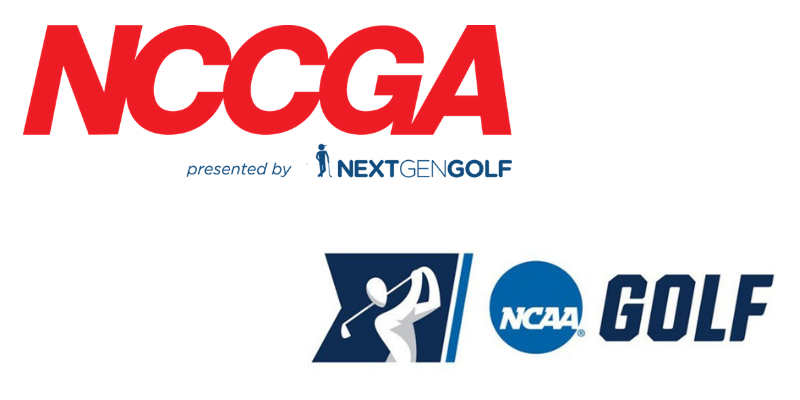Are you a club golfer interested in playing varsity golf? As a college golf consultant and club golf outsider, I’ve watched the growth, strong participation and competition of the NCCGA become better over the last few years. It is clear to me that there are some student athletes who currently play NCCGA club golf who maybe have other options, either at their current institution or maybe even at another college. For any individuals who are thinking about this transition, the NCCGA has asked me to provide some basic guidance on the transfer process including insight into the NCAA rules and regulations and advice on best practices.
Are you even eligible to play varsity golf?
Before even considering NCAA college golf, prospective student athletes should be aware of a some of the basic academic rules:
1. Full-Time Status: Student-athletes must be enrolled in a minimum full-time program of studies leading toward a baccalaureate degree, defined as 12 credit hours per semester. Student- athletes that have already received a baccalaureate degree must be enrolled in either 12 credit hours leading toward a second baccalaureate degree or 9 credit hours leading toward a graduate degree.
2. 6 Hour Requirement: Student-athletes must pass at least six-degree applicable hours each semester to be eligible to compete during the following semester.
3. Progress Toward Degree: To be academically eligible, student-athletes must satisfactorily complete 24 semester hours at the University prior to the start of the institution's third semester following the student-athlete's initial, full-time enrollment. In addition, the student-athlete must complete 18 credit hours in the two regular semesters (i.e., fall and spring) since the beginning of the institution's previous fall term. For student-athletes entering at mid-year or student-athletes that have been granted an exception, the 18 hours must have been earned in the student-athlete's previous two semesters. A student-athlete must declare a major prior to his/her fifth semester of collegiate enrollment and make progress toward that specific degree as follows:
- 40% of degree requirements must be completed before the fifth semester of enrollment (excluding summer)
- 60% of degree requirements must be completed before the seventh semester of enrollment (excluding summer)
- 80% of degree requirements must be completed before the ninth semester of enrollment (excluding summer)
4. 14.5.5.2.10-(c) - Four-year transfer student-athletes must have been academically eligible at the previous institution to use the one-time transfer exception.
Please note that the rules outlined above are for NCAA Division I and that the rules are slightly different for NCAA D2 and D3. Beyond these rules, players will also have other important variables which may impact their eligibility including their age and the number of years or semesters which have elapsed since they have graduated from high school.
New NCAA Legislation
Effective October 15, 2018, College athletes will no longer need permission from their coach or school to transfer and receive financial aid from another school. Under the reformed rule, athletes, including members of the NCCGA would notify their current compliance officer about their intentions to transfer. Upon being notified the compliance officer will enter the names into a database created and managed by the NCAA that will alert schools who can be recruited.
What it may take
The depth and scope of college golf at various levels, makes it difficult to make broad statements about what it may take to transfer or earn a spot on the team at your current institution, however as a rule those with scoring averages of 73.5 or better and GPA’s above 3.5, should have options. Those options will depend on a plethora of variables including the current market for junior golfers and junior college players, willingness to transfer, limitations on geographical region, your budget, ability to interview and desire to engage in what can be a complex and grueling process.
For those who are seriously considering the process, it would be worth reading several of my other articles which provide insight into the process for junior golfers:
How Difficult is it to REALLY play D1 Golf?
College Golf Search: Don’t Count out D3 just yet

One example of someone who has made the transition from NCCGA golf to NCAA golf is Joey Jordan at Virginia Tech. Joey participated for 2 years as a member of the VT Club Golf squad before joining the varsity team. During his NCCGA career, he won 3/4 and was ranked second nationally among club players with a 69.7 scoring average.
For those who are reading this which feel that they meet the NCAA requirements and are very excited about the opportunity to transfer please remember; the grass is not always greener on the other side. College golf, particularly at the highest levels comes with time obligations, and expectations from coaches and team mates. Players should carefully weight the cost and benefit of how the time and expectations may impact their golf, social and academic life before committing to making any changes. For more information on me and my consulting firm Golf Placement Services, please visit https://www.golfplacementservices.com/








